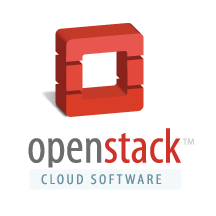Last week I wrote a little bit about OpenStack, what it is good for and that I’ve been working on appliance that you can test. I mentioned appliance to make it easier for people to test OpenStack and play with that. Any feedback is of course appreciated. Since then appliance got updated, because something others have been working on. Although there was Xmass and most of us has other things to worry about enjoy, there has been some progress in other parts of our OpenStack Milestone.
While I was fighting to get OpenStack appliance working, Bernhard Wiedemann was working on other way how to make it more convenient for you to try OpenStack on openSUSE. He wrote a script, that makes the whole OpenStack demo setup much easier. So if you don’t want to use appliance and instead would prefer to just get OpenStack working on your existing setup, you can do it pretty easily. Everything is documented on the wiki. But as you are already reading this, I’ll make it even easier for you and will putt a quick how to here as well.
What do you need? You need some packages, right? First of all you need to add repository with the last stable release. This repository contains fixes, patterns and much more as you’ll see later. You can do it by typing:
zypper ar -f \ obs://Virtualization:/Cloud:/OpenStack:/Diablo/openSUSE_12.1 \ OpenStack
Now what about packages? Easy, we’ve got patterns for you. So you can do just
zypper in -t pattern openstack-controller openstack-compute-node
And you are ready to go. Almost. You need to configure it. That takes some time and can be pretty complicated. But hey, I said it is easy now, haven’t I? So it is. You just need to install one more package! So type in
openstack-quickstart
This will install few scripts that will help you create your demo setup. Now all you have to do is run yet another command. I know, it’s getting complicated, we are now at four commands, but all of them are quite easy, right? Bear with me, we are almost there… The last command you need is
openstack-quickstart-demosetup
This will take care of everything you need. Unless you have MySQL root password set, it will go ahead and configure everything and when it ends, you can just simply point your browser to http://127.0.0.1 and play with the dashboard using login admin and password openstack. That was easy, wasn’t it?

